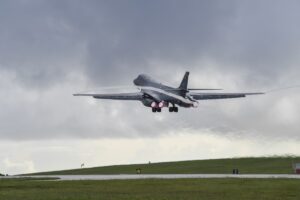
The U.S. Air Force's switch from bomber forward basing to a Bomber Task Force (BTF) model is freeing up time for service personnel at Andersen AFB, Guam to focus on planning to meet threats in the Indo-Pacific region--the most prominent among them, China. Last April, the Air Force said that it was ending its 16-year continuous bomber presence (CBP) at Andersen to move to a BTF model of deploying bombers rapidly, as needed, from the continental United States. “One of…














